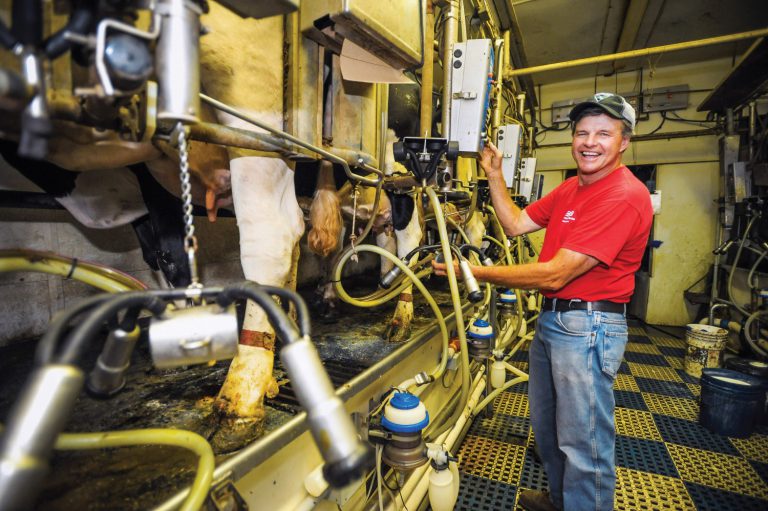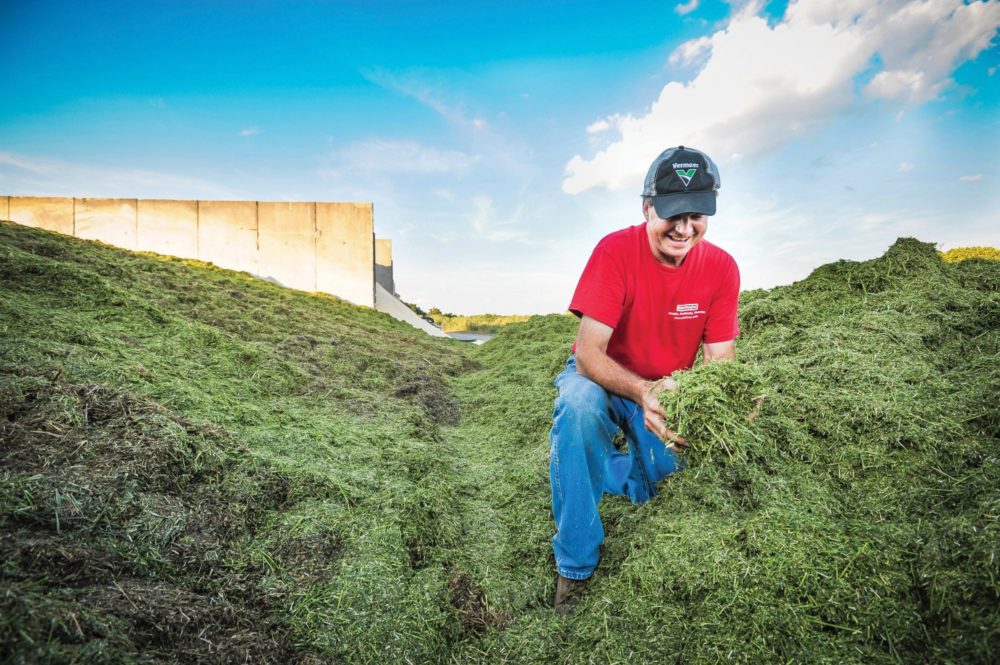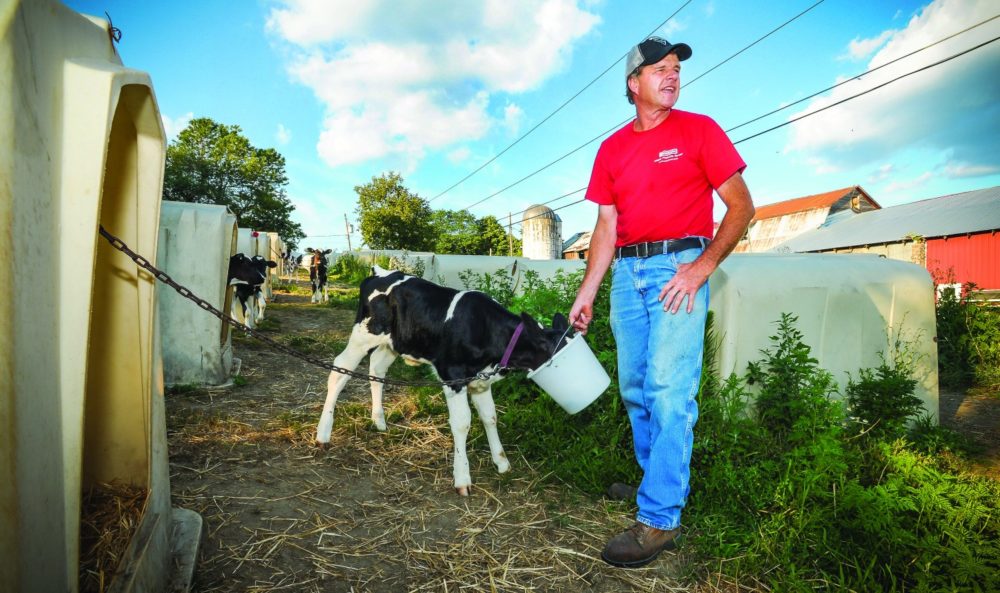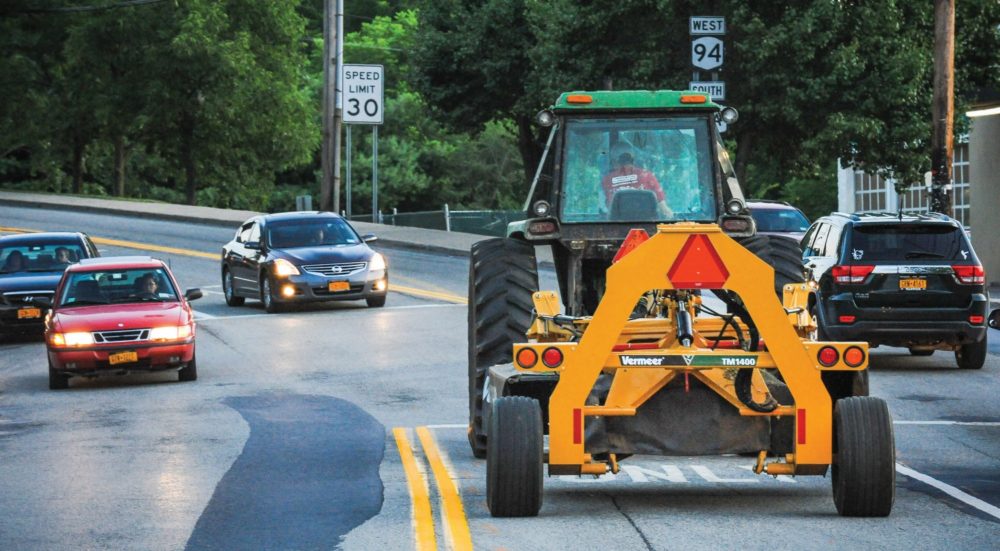
Only In New York
September 2015
Located only 60 miles from Times Square, this dairy has been nourishing New York for over a century.
It was a time of profound growth and prosperity in America. Between 1880 and 1890, four states joined the Union and the nation’s population increased by 13 million to a total of 63 million. And nowhere was busier and more full of life than New York.
The growing population along the East Coast of North America stretched the food supply chain to the limit, creating opportunities for new farms to enter the mix. Thousands began sprouting up across the countryside, stonewalls laid down to divide one family’s farm from the next.
There in Goshen, located some 60 miles north of what is today Times Square, a dairy farm much like any other was founded in 1883. Today it’s known as Fort Hill Farm and its fourth-generation owner, Phil Johnson, speaks with reverence as he relates the origins of the farm his great-great grandparents started so many years ago.

“When people were immigrating to this country (at that time), nutrition was an issue because people had to deal with rickets (a vitamin D deficiency) and lack of calcium. There was a big demand for milk,” Johnson said. “Traditionally, this area was one of the largest dairy areas. You can still see the stonewalls that separated people’s farms. It’s humbling to know my family helped in providing for the growing population.”
Johnson explained that thousands of small dairy farms once operated in the area, and each day trains transported their milk to New York City, where it would be sold in bottles or used to produce butter and cheese. Steep hills abound in the area and Johnson marvels at how his ancestors were able to profit from land that today might only be used for sledding and barrel rolling.
“Back then people actually made a living on hills you could hardly walk up and down, because a cow could pasture those hills and turn that grass into something humans could consume, get nutrition from and grow on,” Johnson said.

Today, Fort Hill Farm is one of only three dairy operations left in Goshen (population 13,687*). Johnson explained that with the advent of interstates and the ability for trucks to transport milk to and from anywhere with relative ease, things changed and the market no longer necessitated so many dairies in such a concentrated area.
Even with fewer total dairies, the state of New York remains one of the nation’s top milk producers, ranking fourth in an annual U.S. dairy statistics report produced by Progressive Dairyman.
Johnson and his wife, Claudia, contribute to the state’s milk output through the production of 250 of their Holstein milking cows. In total, the Johnsons have a 560-head herd, which they’ve worked hard to build over the years.
“We have had a closed herd at Fort Hill Farm for the past 70 years,” Johnson said. “So we don’t buy or bring in animals. We raise them all from birth, and we usually have 250-300 young stock who are not in production yet.”
A closed herd, Johnson said, greatly reduces the risk of outside animals introducing disease into the herd, and he believes his cattle are ultimately healthier for it. Not only that, but he also appreciates “the little things” one notices about the animals they have cared for since birth.
“You might be surprised, but a lot of the cows have their own little mannerisms, and we can really see the genetic ties between them,” he said. “Like the cow that always comes in first to the parlor, and well, look at that, her daughter always comes in first, too.”

With the help of six hired hands, the Johnsons milk twice a day in a double-eight milking parlor, which means they can milk 16 cows at a time. To get all 250 cows through usually takes five hours, and while one farmhand is operating the parlor, the others are helping out with planting, harvesting and haying.
At Fort Hill Farm, the team works together to operate 2,300 acres of corn and hay. Half the corn is typically harvested for grain and the other half as silage for the cattle. Johnson said that in addition to putting up round and square bales of dry hay, they also do a significant amount of haylage.
To get this done, Johnson relies on the Vermeer TM1400 trailed mower and MC3700 mower conditioner. He’ll tell you that mowing is one of his favorite jobs on the farm, and over the last couple of years, they’ve been focusing on wide-swath haying in an effort to shorten dry-down time.
“With wide-swathing, we don’t condition the crop when we’re making haylage,” Johnson said. “There’s a guy by the name of Tom Kilcer who did experiments while he was at Cornell University, and he found that if you leave it in a wide swath, hay dries down to 60 percent moisture just as fast if you condition it or don’t condition it. You can make hay in a day that way, and that’s what we’re going after with this mower.”
Kilcer, who spent 34 years as a field crop and soil educator at Cornell Cooperative Extension, conducted studies that showed in addition to improving dry-down, wide-swaths also increase milk production.

Of course, better dry-down isn’t the only improvement Johnson has seen since making the switch to the Vermeer TM1400. Johnson describes the landscape of the area and how his farm is comprised of numerous rough, small and odd-shaped fields spread out over 21 farms in three different townships. This means Johnson and his men must navigate traffic as they transport equipment through various townships.
“Believe it or not, but we have a tremendous amount of traffic around here,” Johnson said. “So we’re dealing with a lot of stop signs, stoplights, intersections and traffic. With our older mowers, all this traveling was an issue. They were older 12-foot machines, but the TM1400 folds down to be only eight and a half feet wide. Unless you go with a smaller machine, there’s no other mower made that cuts 18 feet wide and folds up to that size to go down the road.”
Johnson said he’s also been pleased with how the TM1400 has handled the uneven terrain in his part of the country.

“This mower is designed with two nine-foot cutter bars, so the machine flexes. It’s not like we have a straight 18-foot cutter bar and one end’s off the ground while the other is digging into the ground. Our fields are small and rolling, and there’s a lot of variation to them, so the suspension system in this machine has been a big benefit for us,” Johnson said.
Because the TM1400 cuts 18-foot wide swaths, Johnson has been able to increase his hay production, which has been vital to their operation. Things like the TM1400’s hydraulic suspension system and its ability to be easily transported from field to field are just a few of the ways Vermeer is helping Fort Hill Farm increase their productivity.
“We’re producers and we have to be more productive every day. When I buy new I want something that can really make a difference. I want a new idea,” Johnson said. “When I saw the TM1400 come along, that hit my idea of making hay. We can mow quicker, and we don’t have to condition because we’re making haylage. It flexes really well and goes down the road narrow. It’s all about being more productive, and that’s why I buy these things.”

Productivity for Johnson means producing and feeding higher quality hay to his cows so they are able to produce higher quality milk. On average, Fort Hill Farm ships out 30,000 pounds of milk every other day. And all that milk goes to a creamery in Queens, New York City.
Founded in 1919, Elmhurst Dairy supplies over 8,300 independent grocers and 1,400 public schools with farm fresh milk. Johnson said he’s very pleased with the relationship Fort Hill Farm has with Elmhurst Dairy and working with another family-owned business makes him proud to be a fourth generation dairy farmer.
“I had no choice but to dairy farm,” Johnson joked. “The genes were in my favor. I’ve enjoyed my way of life my whole life.”
